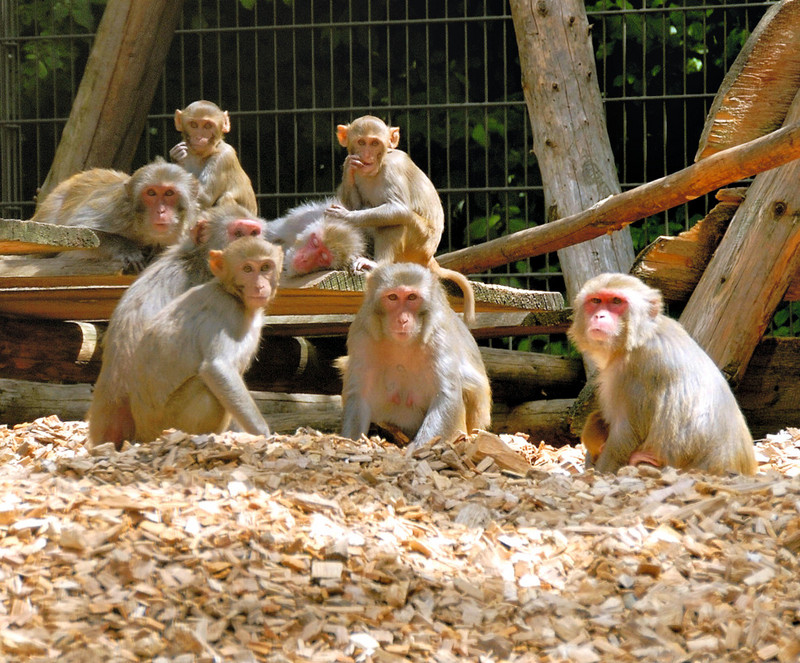The right frame determines the movement

Mathematicians usually describe a position in space using coordinates in a coordinate system. But how does our brain do this? It has been known for some time that the target of an arm movement in some brain regions is coded relative to our line of sight, in others relative to the current position of our hand, but in any case, always relative to our own body. But does that always apply? Neuroscientists at the German Primate Centre (DPZ) – Leibniz Institute for Primate Research in Göttingen have investigated how the target of an arm movement is spatially encoded in the primate brain. They trained two rhesus monkeys to reach for different target positions on a touchscreen while simultaneously measuring the activity of their nerve cells in the brain areas involved in the planning and execution of arm movements. The researchers found that one and the same brain area and even the same nerve cells can encode the target of the movement in different spatial reference systems, depending on what is required by the task at hand. Not only the position of the target relative to one's own body is reflected in the activity of the nerve cells, but also the position of the target relative to other objects. The processing of spatial information is therefore less a question of the area of the brain, but rather of the cognitive demand and it can be adapted dynamically. The findings are relevant for the development of neuroprostheses, among other things, as it is essential for their control that the information read from the brain is interpreted in the correct spatial reference system (Nature Communications).
Saturday evening at a well-attended stand-up party. Servers balance trays of appetizers over the heads of the guests. We spot donuts on one of these passing platters and decide in a matter of seconds in favor of the one on the far right. But then the waitress briefly disappears from our field of vision, only to reappear elsewhere. How does our arm know where to reach to grab the donut? Relative to our body, our favorite donut has changed its position in the meantime. However, relative to the tray on which the donut is lying, its position remains constant. Can our brain utilize this fact? How and where does our brain process the different spatial information in order to be able to successfully carry out targeted movements, such as reaching for the donut?
If we imagine a spatial coordinate system, its origin or zero point can be either body-related (direction of gaze, position of the hand, arm, center of the body) or object-related (position, size or orientation of an object in space). So far, it had been assumed that for directing our hand towards the favorite donut, only body-related reference systems are processed in different regions of the brain than object-related ones and that only body-related reference systems play a role in the planning of arm movements.
A study by the Sensorimotor Research Group at the German Primate Center now shows that this classic model needs to be re-evaluated. In order to find out which coordinate system underlies the planning of goal-oriented movements, they trained two rhesus monkeys to memorize movement goals on a touch screen in order to reach for them later. The monkeys first saw an object consisting of five small squares next to each other on the screen, which were connected horizontally by a line (the “tray” in the example above). In the next step, the squares disappeared and the monkeys saw a target dot positioned where one of the squares was previously visible, for example in the second square from the right (the position of the preferred donut). The dot then disappeared and after a short pause the five squares reappeared, but shifted a little to the right on the screen. The monkeys were now asked to touch the square where they had previously seen the target dot, i.e., the second square from the right, although it was further to the right on the screen than before. While the monkeys performed the task, the activity of their nerve cells in the areas of the brain responsible for planning and executing targeted arm movements was measured.
“The results of the experiment surprised us,” says Bahareh Taghizadeh, first author of the study. “Contrary to expectations, we found that both body- and object-related spatial reference systems can be detected in one and the same brain area and that these are also processed by the same nerve cells, dynamically adaptable depending on the cognitive requirement.”. The researchers found brain areas with such flexible spatial coding both in the parietal and the frontal lobe of the brain.
For the donut tray, this means that as long as our brain only processes the information that we want the right donut, this happens in an object-related coordinate system, i.e., relative to the tray, regardless of our own position in space or our line of sight. However, from the moment we actually plan to reach for the pastry, its position is coded relative to our own body.
The results are important for our basic understanding of brain function, but also for the development of neuroprostheses. The activity of the nerve cells determines for the motor prosthesis to which target a movement is planned. “If a robotic arm is to be controlled, the information relative to which position in space the arm is to be moved upwards to the right, for example, is essential,” explains Alexander Gail, head of the Sensorimotor Research Group and the study. “The correct control depends largely on describing the movement in the correct coordinate system.” Future studies should clarify whether and to what extent in these brain regions coordinate systems that are defined by the surrounding space also play a role in planning movements when oneself moves through the room.
Original publication
Taghizadeh B, Fortmann O, Gail A (2024): Position- and scale-invariant object-centered spatial localization in monkey frontoparietal cortex dynamically adapts to cognitive demand. Nat Commun 15, 3357. doi.org/10.1038/s41467-024-47554-4



